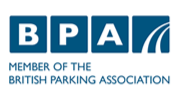Case Study: Norwich City Council
Reducing through traffic, enhancing the experience of shoppers and visitors and improving accessibility to the city centre has helped to transform the heart of Norwich and stimulated new inward investment. And the success of the city’s far-reaching transport reforms owes much to a progressive and highly effective bus lane enforcement programme implemented by the City Council in partnership with Imperial.
“Removing general traffic from congested medieval streets and ensuring the centre of the country’s largest walled city is permeable to public transport has required extensive public consultation and very careful planning,” says Bruce Bentley, Norwich City Council’s Principal Transportation Planner.
“Imperial’s experience, resources and support has been invaluable from the outset and the phased introduction of CCTV bus lane enforcement has been a real success. The risk of conflict between vehicles and pedestrians has reduced considerably and it is now a much safer and cleaner area to wander around. Certainly, the ambience of the busiest shopping areas has improved dramatically and the response from retailers and the general public has been very encouraging.”
Norwich was the first city in the UK to introduce a pedestrianised street in the late 1960s and, in recent years, phased moves have been made to limit through traffic in other central areas. Despite this, the potential conflict between vehicles and pedestrians was still a cause for concern in key areas of the central area. A monitoring survey, for example, showed nearly 50,000 people were crossing busy and congested roads around the large Marks and Spencer and Debenhams stores every day during shopping hours.
The latest measures to remove general traffic from the city’s retail heart have followed the adoption of a more definitive approach to parking provision in and around the city.
(left to right) Bruce Bentley , Norwich City Council’s Principal Transportation Planner, with Toby Bliss from Imperial Civil Enforcement Solutions
This has seen larger strategic car parks – such as the award-winning Rose Lane Car Park – replacing a multitude of smaller car parks in the central area. Earlier attempts to introduce bus lane restrictions relied on periodic enforcement undertaken by the local police. Although this helped to deter some private vehicles, a much more effective and permanent solution was required.
“The use of CCTV cameras really was the only option,” explains Norwich City Council’s Senior Systems Officer, Matthew Cushion.
“The biggest problem was not knowing the scale of likely vehicle contraventions, the future volume of Penalty Charges or the potential number of representations and appeals. Using the technical expertise of Imperial and the flexible resources and experience of the company’s Business Processing Unit has minimised risks, eliminated the need for additional staffing and provided us with a very cost-effective solution. It has also been a seamless exercise, as it has been a logical extension of our long-standing partnership with Imperial.”
Three SEA cameras were used in the first phase of the enforcement programme to exclude private vehicles from the retail areas along St Stephens Street and Rampant Horse Street.
Following the required changes to local road transport regulations, the system went live in November 2015. This also included the first phase of alterations to vehicle access in adjacent Westlegate. At the end of last year, a further camera was installed in Albion Way to improve public transport access to the city centre from major new residential developments in the areas near Norwich City’s stadium.
All contraventions captured by all the CCTV cameras are reviewed and verified on behalf of the Council by the team of experienced Review Executives at Imperial’s Business Processing Unit prior to the issue of Penalty Charge Notices. All PCN and payment processing is also undertaken by Imperial, with Council input on bus lane enforcement focussing simply on representations and appeals.
“The new system has met all objectives and deadlines and has trebled the effectiveness of bus lane enforcement in the central areas,” adds Bruce Bentley. “Initial concerns from members of the public and local retailers that removing traffic from the centre of Norwich would deter visitors and ‘kill the city centre’ have proved to be unfounded. Visitor numbers have increased and there has been a significant increase in the popularity and appeal of the city’s main shopping areas.
Company Registration Number: 02023383 ¦ Registered Office Address: Century House, 1 The Lakes, Northampton, NN4 7HD





